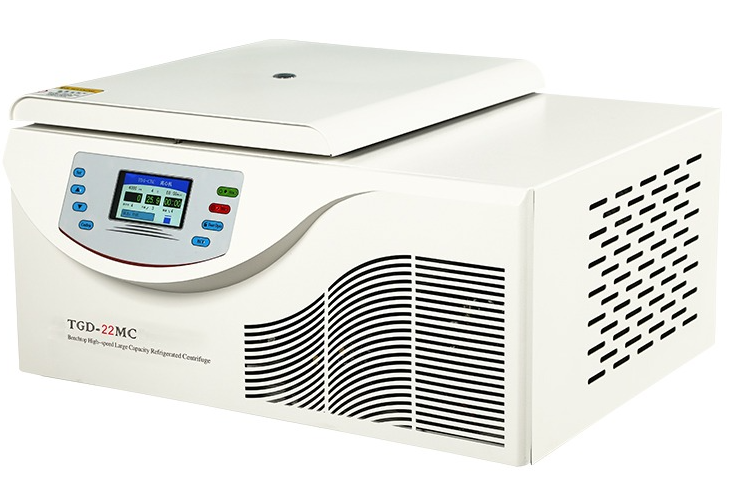Refrigerated centrifuges are essential pieces of equipment for use in scientific research facilities because they allow for accurate temperature regulation in addition to the separation capabilities provided by centrifugal force. It is essential to comprehend the principle that underpins these powerful machines in order to comprehend the significance they play in a variety of research fields. In this piece, we will investigate the basic concept behind a refrigerated centrifuge and shed some light on how it works to achieve temperature-controlled sample processing.

The Basic Idea Behind Maintaining a Consistent Temperature
The fundamental operations of a refrigerated centrifuge are identical to those of a conventional centrifuge; the primary difference is that the refrigerated model also includes an adjustable temperature setting. During the centrifugation process, the primary objective of the refrigeration system is to maintain a controlled temperature range that is typically at a lower temperature. This is made possible by the incorporation of a cooling mechanism into the centrifuge chamber, which maintains a consistent temperature throughout the process.
The Mechanism in Charge of Cooling:
Refrigerated centrifuges make use of a cooling mechanism that is typically made up of a compressor, a refrigerant, a heat exchanger, and a temperature control system. The compression of the refrigerant, which results in an increase in both temperature and pressure, is the job of the compressor. The heated refrigerant is then routed through a heat exchanger, where it dissipates the heat it had previously absorbed into the environment, thereby causing the environment to become cooler.
As the refrigerant that has been cooled flows back into the compressor, it goes through a process of expansion, which results in a decrease in both its pressure and temperature. This refrigerant, which has been cooled and is under low pressure, is then directed to the chamber of the centrifuge, where it absorbs heat from the samples that are being centrifuged. The refrigerant effectively cools the samples by absorbing heat, thereby maintaining the desired temperature range throughout the centrifugation process. This occurs throughout the entire process.
System for Regulating Temperature:
A temperature control system is built into a refrigerated centrifuge so that the temperature can be precisely maintained at all times. This system performs a continual monitoring of the temperature within the chamber and makes appropriate adjustments to the cooling mechanism as needed. It is possible for high speed refrigerated centrifuge to have a thermostat, sensors, and electronic controls in order to keep the temperature at the desired level. Because of this, researchers are able to tailor and control the temperature of their experiments to meet the specific requirements of their investigations.
The processing of samples:
The high speed refrigerated centrifuge functions in a manner analogous to that of a conventional centrifuge once the desired temperature has been established. The sample tubes or containers are spun at high speeds by the rotor that is driven by a motor. This generates centrifugal force, which causes the denser components to separate and migrate towards the tubes' outer edges. In the meantime, the refrigeration system makes certain that the samples are kept at the temperature that has been established, thereby reducing the likelihood of temperature-induced damage to the samples or loss of sample integrity.
The basic idea behind a refrigerated centrifuge can be put to use in a wide variety of scientific fields as well as in different types of businesses. Biological research, including the preservation and separation of temperature-sensitive biological samples, cell culture, protein purification, and enzyme kinetics are some notable applications.- The processing and storage of blood, plasma, and various other biological fluids are included in medical diagnostics.- The separation and purification of heat-sensitive pharmaceutical compounds in the pharmaceutical industry.- Isolation of subcellular components, extraction of DNA, and investigation of protein-protein interactions fall under the purview of molecular biology.
During the sample processing that is accomplished through the use of centrifugal force, the core idea behind a refrigerated centrifuge is to maintain an exact temperature control. Refrigerated centrifuges have a cooling mechanism and a temperature control system built into them. These features allow researchers to maintain a controlled temperature range that is frequently at a lower temperature throughout the centrifugation process. This feature is essential for maintaining the integrity of samples and carrying out experiments in a variety of scientific fields that are sensitive to temperature changes. The utility of a refrigerated centrifuge can be improved by gaining an understanding of the underlying principle that drives it, which can also pave the way for improvements in research and laboratory procedures.

